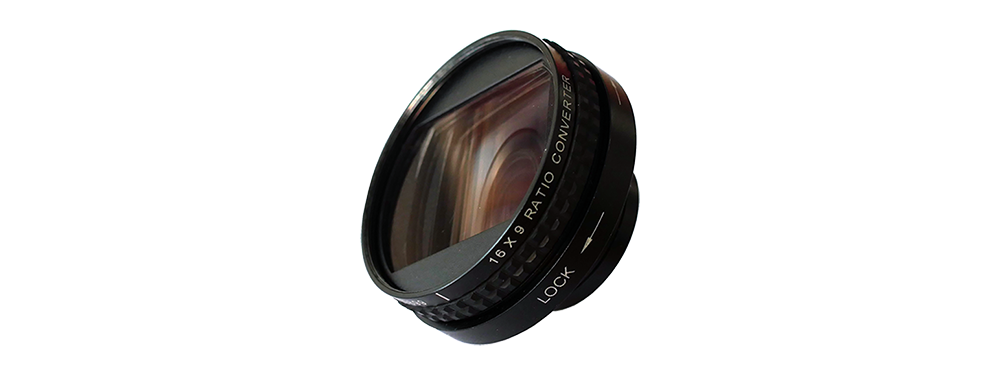Century Optics 16x9 & Tokina +0.4 Achromatic Diopter

In one of my previous blogposts I explained the basics of anamorphic optics. Click here to read about the basics of anamorphic optics. In short, anamorphics turn lens flares into fully horizontal, colored anamorphic lens flares; anamorphics give a more shallow Depth Of Field; out of focus lights or bokeh turn oval and slight vignetting may occur depending on the taking lens.
Ease of Use and Adaptability
The Century Optics 16x9 Ratio Converter has a 1.33x stretch factor, converting a 4:3 image into a 16:9 image. Even more interesting: a 16:9 becomes 2.40:1.
It's a small anamorphic, so it's best used on smaller sensor cameras like Micro Four Thirds (Panasonic, Olympus, or the Blackmagic Pocket Cinema Camera 4K for example) to avoid vignetting. The size and weight of this anamorphic make it very easy to adapt it to various setups, it doesn't require extra rail support. This anamorphic can easily be mounted to various taking lenses using its built-in rear filter thread, which is 37mm. No clamps needed, just a few step-down rings. The front also features filter thread, at 62mm, ideal for attaching variable ND filters and diopters.
The minimum focal length of the taking lens is about 35mm on Micro Four Thirds cameras, 50mm for APS-C, and about 70 for Full Frame. Note that focal lenghts above ~50mm are incompatible with this anamorphic adapter. This means the adapter works well for Micro Four Thirds and APS-C cameras without vignetting, but not so much for Full Frame cameras. This anamorphic lens is focus through, which means focus is set on just the taking lens - no other focus solution needed.
Visual Traits of the Century Optics 16x9 Ratio Converter
This anamorphic produces interesting anamorphic lens flares. Bright sources of light don't get turned into one horizontal streak, instead a stack of multiple smaller horizontal anamorphic flares can be seen. On a Micro Four Thirds setup, the taking lens should have a focal length of ~35mm to avoid vignetting. On APS-C, ~50mm will do. On Full Frame, ~70mm is needed for a clear shot. This lens suffers quite intense chromatic aberration, so the image gets really soft and unsharp towards to edges. This does result in a satisfying 3D 'pop'. Sharpness is further reduced at higher apertures, fully open is often unusable.
The chromatic aberrations can be greatly reduced by using an achromatic diopter. One of the most popular diopters for anamorphic cinematography is the Tokina +0.4 achromat. The following video is an example of this anamorphic paired with the Tokina +0.4. It's a lightweight setup, ideal for 'run and gun' anamorphic situations.
Panasonic G85, Mir-1b, Century Optics 16x9 converter, Tokina +0.4 Achromat.
